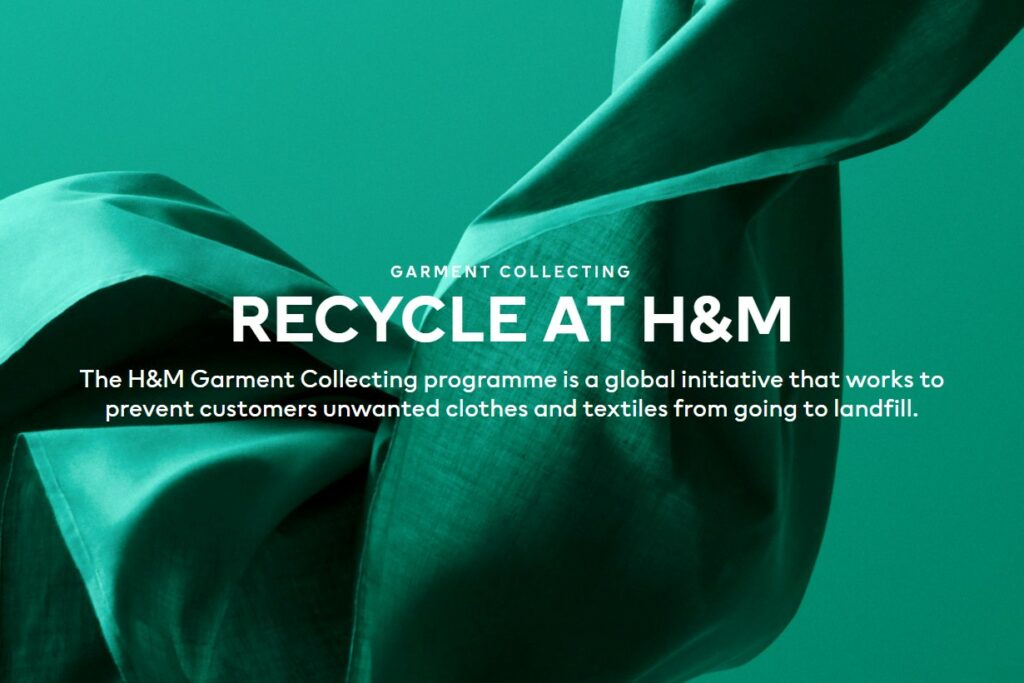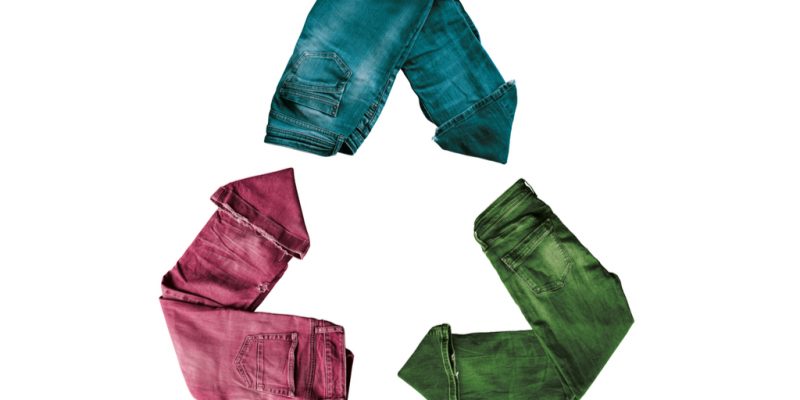Everyone loves getting new clothes and it is even better when you get a bargain, although exactly what is the cost? Every year 60% of clothes produced are thrown out, most ending up at a landfill (Esguevillas, no date). Fashion is the world’s second most polluting industry and estimations predict that the emissions from the sector will increase by around 60% by 2030 (Esguevillas, no date).
However, research conducted by Elle UK have recently discovered that attitudes and awareness towards sustainability in the fashion industry have changes, with 90% of women now wanting to know more about sustainability in the industry and 51% wanting to know what they can do to make a difference (Esguevillas, no date).
Many fashion brands are now starting to release that something needed to be done before it is too late. One of them brands is H&M. In 2012, they launched the ‘Conscious’ range and ever since they have had yearly campaigns (Weigle, 2012). On their website they have described the products as being: “Made with care and consideration for the people who make them and for the environment” (H&M, 2021). H&M say that by choosing these products consumers are helping to make the fashion industry more sustainable (H&M, 2021).
In spite of this, H&M have received backlash from many people for saying their sustainability claims are not genuine, as they will be unable to back up their claims (Whiting, 2019). Even though, they have a page called ‘Conscious Products Explained,’ reports say they have limited information available there, suggesting that this could in fact be a form of greenwashing (Whiting, 2019). Greenwashing is when companies mislead customers to think that their product are environmentally friendly (Kenton, 2021).

They can also be seen to be greenwashing by their choice in photography, as it shows a range of models surrounded by a lot of plants and green grass, as seen in photos above (Whiting, 2019). When the consumer looks at this, they will assume that it helping the environment, because this is what the imagery suggests.
There is a high chance that H&M are using this collection to make consumers think that they are being environmentally friendly, when in fact it is very hard for a fast fashion brand to be sustainable, for many reasons. The main reason is that the amount of time we keep each garment has significantly decreased, as between 1992 and 2002, we’ve reduced the amount of time we keep our clothes for, by an astonishing 50% (Whiting, 2019). Furthermore, the fashion industry makes up 5% of the global greenhouse gases, therefore H&M will need to do more, as they are one of the biggest fashion retailers (Whiting, 2019).

Nevertheless, H&M also have a clothing recycling service, which allows customers to take any old clothing from any brand to their stores in order to be recycled (Whiting, 2019). This shows that H&M are trying to start somewhere to encourage each individual customer to start being more responsible, while also trying to be more sustainable themselves.
However, this has also been criticised because the amount of clothing that H&M produces in 24 hours would take 12 years to recycle. Therefore, making this fairly ironic, as they encourage customers to recycle as they continue to add to the problem, whilst still sending a significant amount to immediate waste (Whiting, 2019).
Although H&M has received a lot of criticism, they have now had yearly ‘Conscious’ campaigns for more than 10 years and although they may not be achieving the most they are capable of doing, they have started trying to make a difference and because they are such a large company, every small steps is significant (Whiting, 2019). Furthermore, it is almost impossible for them to be fully sustainable, given the size of the company and it would be very costly for them to try to achieve this. So, for now H&M will continue to try to make a difference through the ‘Conscious’ campaigns and the recycling service.
The fast fashion industry is still a long way away from being sustainable, and it is something we may never achieve, due to the nature of the industry. However, every small step brands like H&M make, will help to make a difference to making the industry more environmentally friendly.

References
- BBC Earth (2019), Can Fashion Be Sustainable? Available at: https://www.youtube.com/watch?v=ZoiU8sprXpQ (Accessed date: 4th May 2021)
- Esguevillas. C (no date), Can fast fashion ever be sustainable? Available at: https://simply-sustainable.co.uk/insights/can-fast-fashion-ever-be-sustainable (Accessed date: 4th May 2021)
- Fashiongonerogue (2020), H&M Conscious Exclusive Fall 2020 Campaign. Available at: https://www.youtube.com/watch?v=3mQ_uSnoyPw (Accessed date: 4th May 2021)
- H&M (2021), Conscious Products Explained. Available at: https://www2.hm.com/en_gb/customer-service/product-and-quality/conscious-concept.html (Accessed date: 4th May 2021)
- Kenton. W (2021), Greenwashing. Available at: https://www.investopedia.com/terms/g/greenwashing.asp (Accessed date: 4th May 2021)
- Pinterest (no date), Environmentalism Quotes. Available at: https://www.pinterest.co.uk/pin/139682025930254596/ (Accessed date: 4th May 2021)
- Stevens. B (2020), H&M launches “smart” recycling bins to collect shoppers old clothes. Available at: https://www.chargedretail.co.uk/2020/01/14/hm-launches-smart-recycling-bins-to-collect-shoppers-old-clothes/ (Accessed date: 4th May)
- Takouleu. J (2020), Egypt: “Vatrina”, an application for sustainable fashion, launched by students. Available at: https://www.afrik21.africa/en/egypt-vatrina-an-application-for-sustainable-fashion-launched-by-students/ (Accessed date: 7th May 2021)
- Weigle. L (2012), H&M Launches Eco-Friendly Fashion Line. Available at: https://www.thefashionspot.com/runway-news/173155-ham-launches-eco-friendly-fashion-line/#/slide/1(Accessed date: 4th May 2021)
- Whiting. T (2019), ‘Sustainable Style’: The Truth Behind the Marketing of H&M’s Conscious Collection. Available at: https://tabitha-whiting.medium.com/sustainable-style-the-truth-behind-the-marketing-of-h-ms-conscious-collection-805eb7432002 (Accessed date: 4th May 2021)
